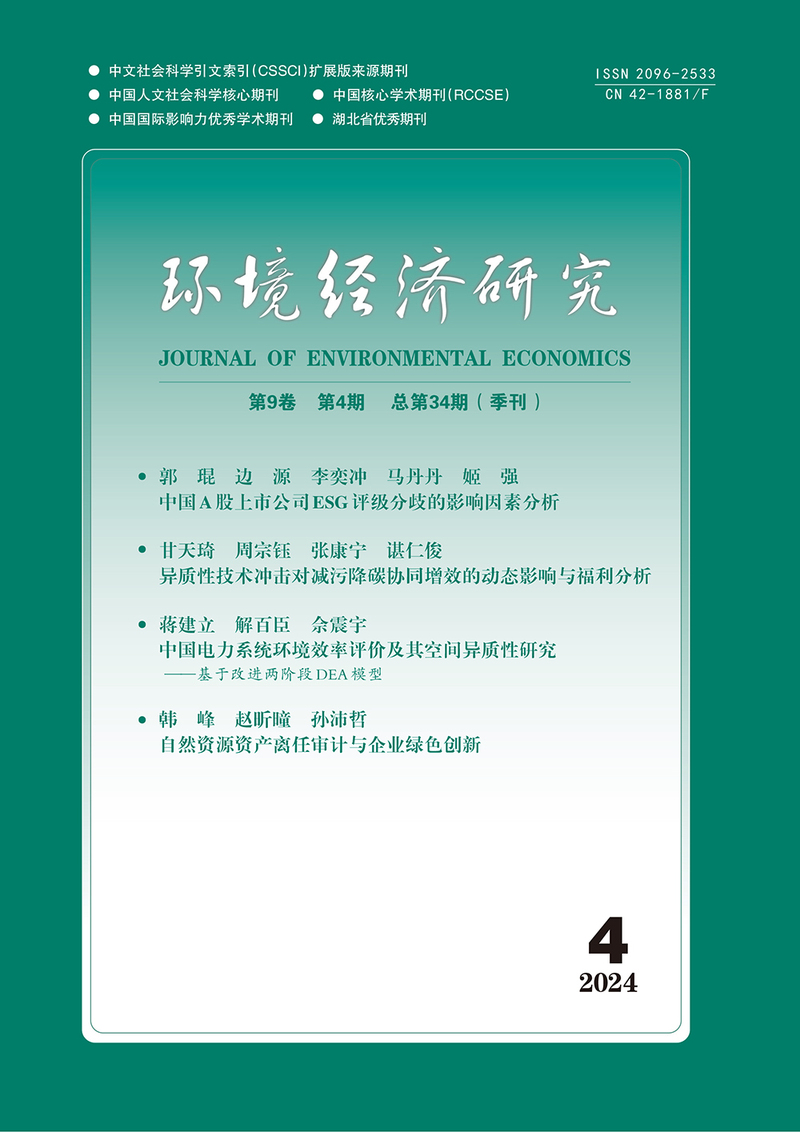The Dynamic Characteristics between Residential Carbon Emissions and Household Income
Ru Xingjun and Su Liyang
摘要:本文基于马尔科夫链多步转移矩阵首先探索1994-2013年间我国30个地区的居民收入和生活用能碳排放联合动态演进路径,并对产生这种联合动态演进路径的原因进行解释,然后对各地区居民生活用能碳排放-收入的长期稳定状态进行预测,研究发现:高生活用能碳排放-高收入、中生活用能碳排放-高收入地区的状态最稳定,且高收入地区更倾向于保持原有的居民生活用能碳排放水平;中生活用能碳排放-低收入和中生活用能碳排放-中收入地区生活用能碳排放转移方向均具有双向性特征,但是两者向高生活用能碳排放状态转移的概率更大;高生活用能碳排放-低收入和高生活用能碳排放-中收入地区生活用能碳排放会保持在高排放状态或者向中生活用能碳排放状态转移。长期来看,中等收入地区更有可能稳定于中生活用能碳排放状态,高收入地区居民生活用能碳排放可能出现两极分化现象。
关键词 : 马尔科夫链, 生活用能碳排放, 居民收入, 联合动态演进
Abstract: This paper based on Markov chain transition matrix explore dynamic evolution path between residential carbon emissions and household income in 30 regions of China in 1994-2013, and has carried on the explanation of the combined dynamic evolution path. We predict stable equilibrium state between residential carbon emissions and household income in the long-term, we found that high residential energy carbon emissions - high income and middle residential energy carbon emissions - high income areas are the most stable, these areas tend to maintain the original level of residential energy carbon emissions; middle residential energy carbon emissions - low income and middle residential energy carbon emissions - middle income areas’transfer bidirectional characteristic; high residential energy carbon emissions-low income and high residential energy carbon emissions - middle income areas will stay in high residential energy carbon emissions level or transfer to middle residential energy carbon emissions state. In the long term, the middle-income areas are more likely to be stable in the middle residential energy carbon emissions state, residential energy carbon emissions level of high income areas are more likely to face polarization phenomenon.
Keywords: Markov Chain; Residential Carbon Emissions; Household Income; Dynamic Evolution Path
DOI:10.19511/j.cnki.jee.2016.02.004
